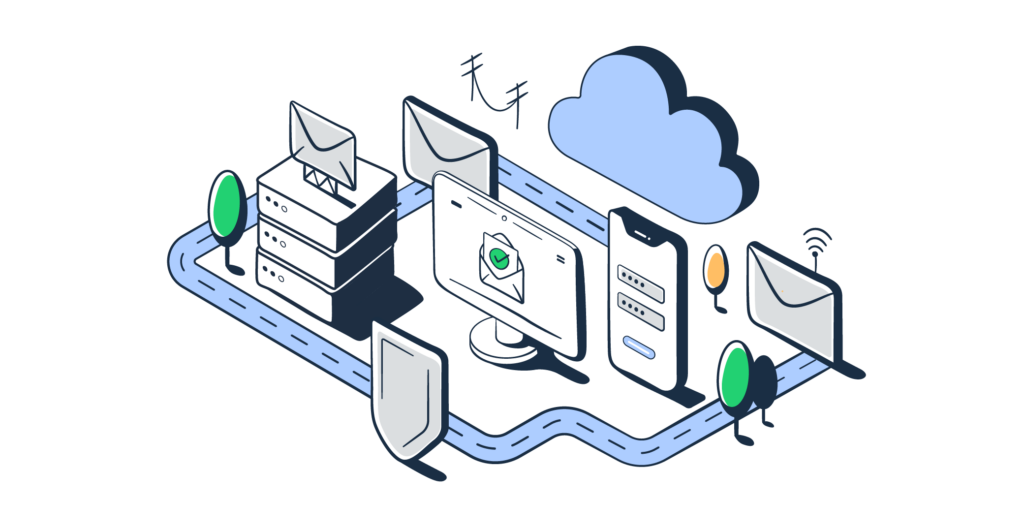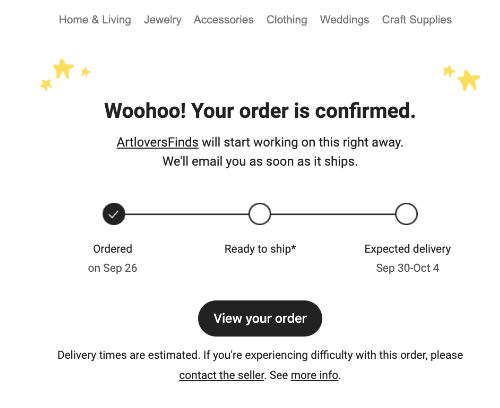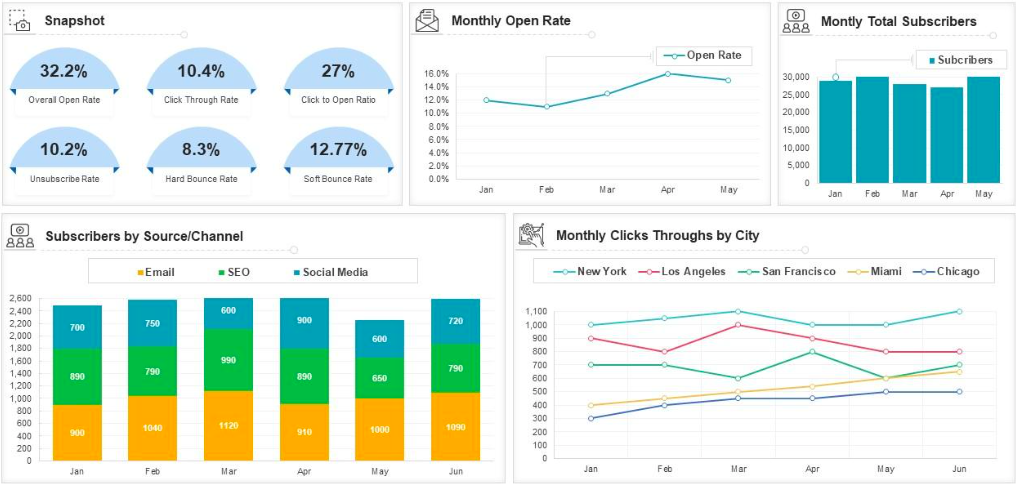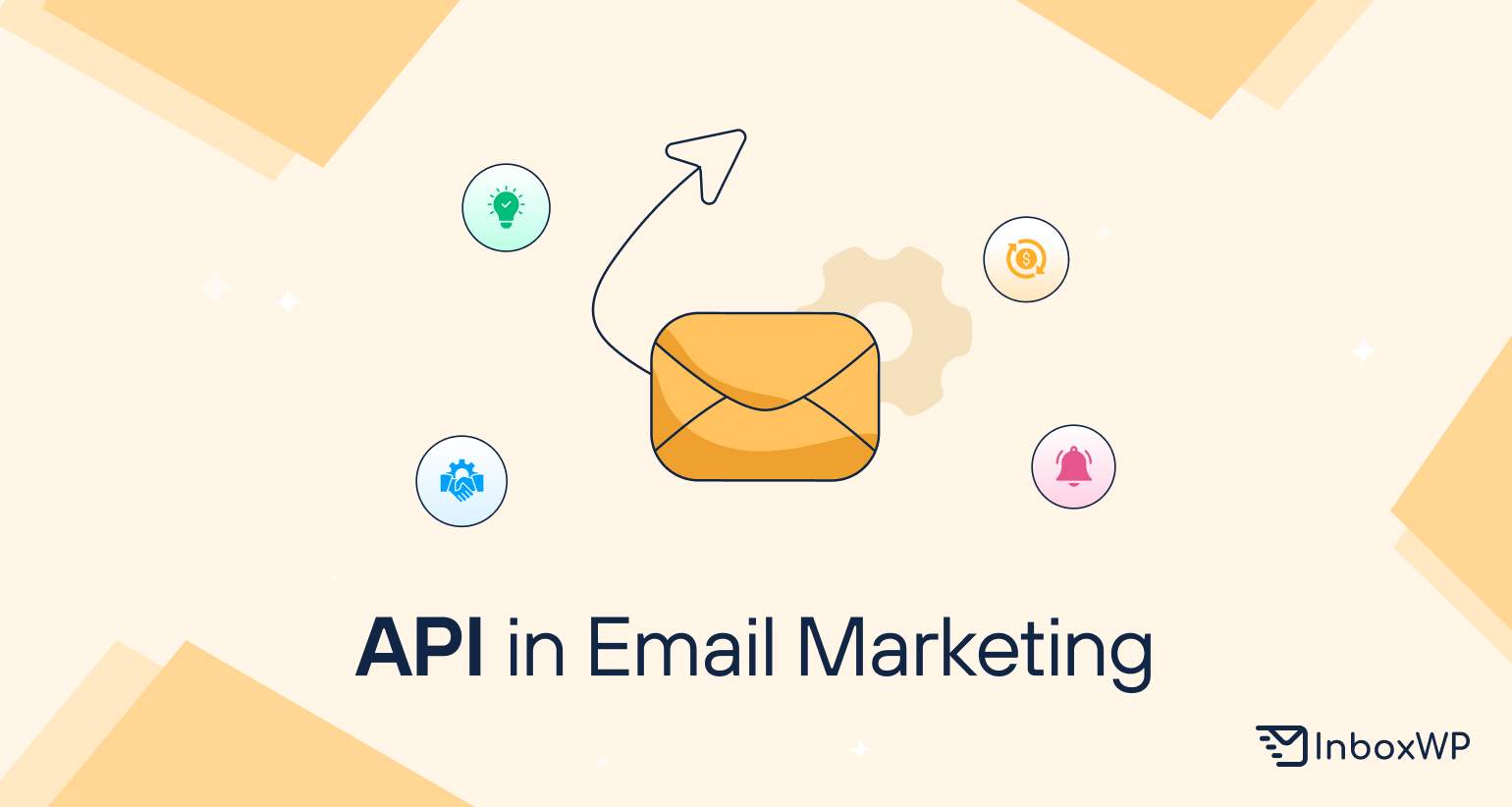As an email marketer, you may needn’t be a technical genius of the process. Though, you need a certain amount of knowledge to run the sending process smoothly. And you should be curious about email APIs because you need them before using an email marketing tool.
An Email API (Application Programming Interface) is a set of rules and protocols that allow developers to integrate email functionality into their applications, websites, or services.
Well, throughout this article we will be discussing email APIs in email marketing. Also, we will share the best ways to choose the right one for your email sending. Keep reading.
What is an email API

An email API is a bridge between a software application and an external email service. It allows automating the email process like sending and receiving. Also, it can manage email templates, track email analytics, etc.
To be more precise, an email API (Application Programming Interface) is a set of rules and protocols that allows different software applications to communicate and interact with each other to perform specific tasks related to email functionality.
It provides a way for developers to integrate email-related features and capabilities into their own applications or services, saving them from creating an entire email infrastructure from scratch.
Therefore an email API is beneficial for saving time and resources for both the developers and email users.
Email API vs SMTP – What are the differences?

Email API and SMTP both are processes and protocols to send and receive emails. Are there any differences between them? You could say yes.
People are often confused about these two terms and mix up things. So, before we get through API in email marketing, let’s check out the differences between email API vs SMTP (Simple mail transfer protocol) –
1. Functionality and Purpose
Email API
An Email API (Application Programming Interface) is a set of rules and protocols that allow software applications to communicate with each other.
Email APIs are used for programmatically sending, receiving, and managing emails from within an application. They provide developers with more control over the email process, enabling features like customized formatting, tracking, and integration with other services.
SMTP
SMTP, on the other hand, is a protocol used specifically for sending emails.
It’s the standard protocol for email communication between mail servers. SMTP is responsible for transferring the email from the sender’s mail server to the recipient’s mail server.
2. Flexibility and Customization
Email API
Email APIs offer more flexibility and customization options. Developers can format emails using HTML, track email opens and clicks, manage recipient lists, and integrate other services like analytics and CRM systems.
SMTP
While SMTP provides a basic method for sending emails, it may not offer the same level of customization and tracking options as an email API.
Overall, Email APIs give you more control, customization, and integration capabilities for incorporating email functionality into your applications.
On the other hand, SMTP is primarily focused on sending emails between mail servers.
You can choose any one of them based on your needs. Let’s explore more about Email API.
Use cases of API in email marketing

APIs (Application Programming Interfaces) play a crucial role in enhancing and streamlining various aspects of email marketing. They enable integration between different software systems, allowing for automation, customization, and efficient management of email campaigns. Here are some key use cases of APIs in email marketing –
1. If you want to implement a transactional email process
When you want to send transactional emails like password resets, delivery updates, email recipes, etc – they all are trigger-based emails, and they depend on different user triggers to activate.
To send these types of emails, you need a transactional email API. It will help you to implement transactional email in your system.

2. When you want to send customized email content to subscribers
Email API can help you to implement a newsletter system for your website.
For example, if you want to send dynamic email content or a highly customized newsletter to your user, and you want to do it by analyzing user behavior on your site, an email API like SendGrid or Amazon SES can simply help you to develop a newsletter sending process.

If you are a content creator, you can easily send weekly newsletters like the Economist did with an email API service provider.
3. Learn your email marketing stats and analytics

You can learn your email analytics and performances through the email marketing tool you are using right now. It’s one of the best things one can get from an email marketing platform that comes with email API.
These tools can also help you to create a stats update in your website dashboard, especially if you are using a WordPress site.
Things you should consider before choosing API in email marketing

When choosing an Email API for your application, there are several important factors to consider to ensure that you select the right provider that meets your needs. Here are some key considerations:
1. Use Case and Email Volume
Understand the types of emails you’ll be sending (transactional, marketing, notifications) and the expected email volume. Different Email APIs may specialize in certain use cases or be optimized for handling varying levels of email traffic.
2. Deliverability and Reputation
Check the Email API provider’s deliverability rates and reputation. High deliverability ensures that your emails reach recipients’ inboxes and don’t get flagged as spam.
3. Features and Functionality
Review the features offered by the Email API, such as customization, tracking, analytics, segmentation, A/B testing, and integration with other services (e.g., CRM, and analytics platforms).
4. Ease of Integration
Evaluate the ease of integrating the Email API with your application. Look for providers that offer well-documented APIs, libraries, SDKs, and sample code for various programming languages.
5. Coding Experience
Consider your team’s coding skills and experience. Some Email APIs might require more technical expertise to integrate effectively.
6. Templates and Customization
Check if the Email API supports customizable email templates, allowing you to match your brand’s look and feel. Look for options to include HTML, CSS, and dynamic content.
7. Transactional vs. Marketing Emails
Determine if the Email API is suitable for both transactional and marketing emails, as some providers specialize in one area more than the other.
8. Scale and Performance
Assess the Email API’s ability to scale with your application’s growth. Ensure it can handle your current and projected email volumes without sacrificing performance.
9. API Rate Limits
Check the provider’s rate limits for API calls. Ensure they align with your expected usage and don’t hinder your application’s performance.
10. Security and Compliance:
Ensure the Email API provider follows industry standards for email security and data protection. Consider features like encryption, data residency options, and compliance with regulations (e.g., GDPR).
11. Pricing and Cost
Understand the pricing model of the Email API. Some providers offer free tiers with limited features, while others charge based on the number of emails sent or other factors. Compare costs based on your anticipated usage.
12. Support and Documentation
Review the quality of the provider’s documentation, support options (email, chat, phone), and community resources. Responsive and helpful support can be crucial when you encounter issues.
13. Uptime and Reliability
Check the provider’s uptime guarantees and historical reliability. Downtime or outages could impact your ability to send critical emails.
14. Vendor Lock-In
Consider the potential for vendor lock-in. Make sure it’s possible to migrate away from the chosen Email API if needed without significant disruptions.
15. User Reviews and Recommendations
Research user reviews, testimonials, and recommendations from other businesses that have used the Email API. This can provide insights into real-world experiences.
16. Trial and Testing
Many Email API providers offer free trials or sandbox environments. Take advantage of these to test the API’s features, integration, and performance before committing.
By carefully considering these factors, you can choose an Email API that aligns with your application’s requirements, supports your desired features, and provides a reliable and effective email communication solution.
Final Thoughts
Well, we have only discussed some of the most crucial examples of how APIs enhance email marketing by enabling automation, personalization, and seamless integration with other systems.
Using APIs in your email marketing strategy can help you create more effective, targeted, and engaging campaigns.
Let us know if you have further questions.
